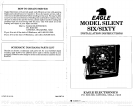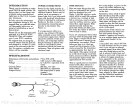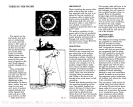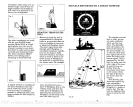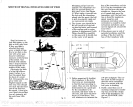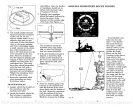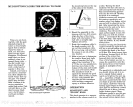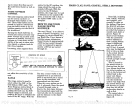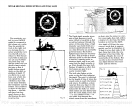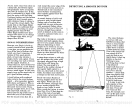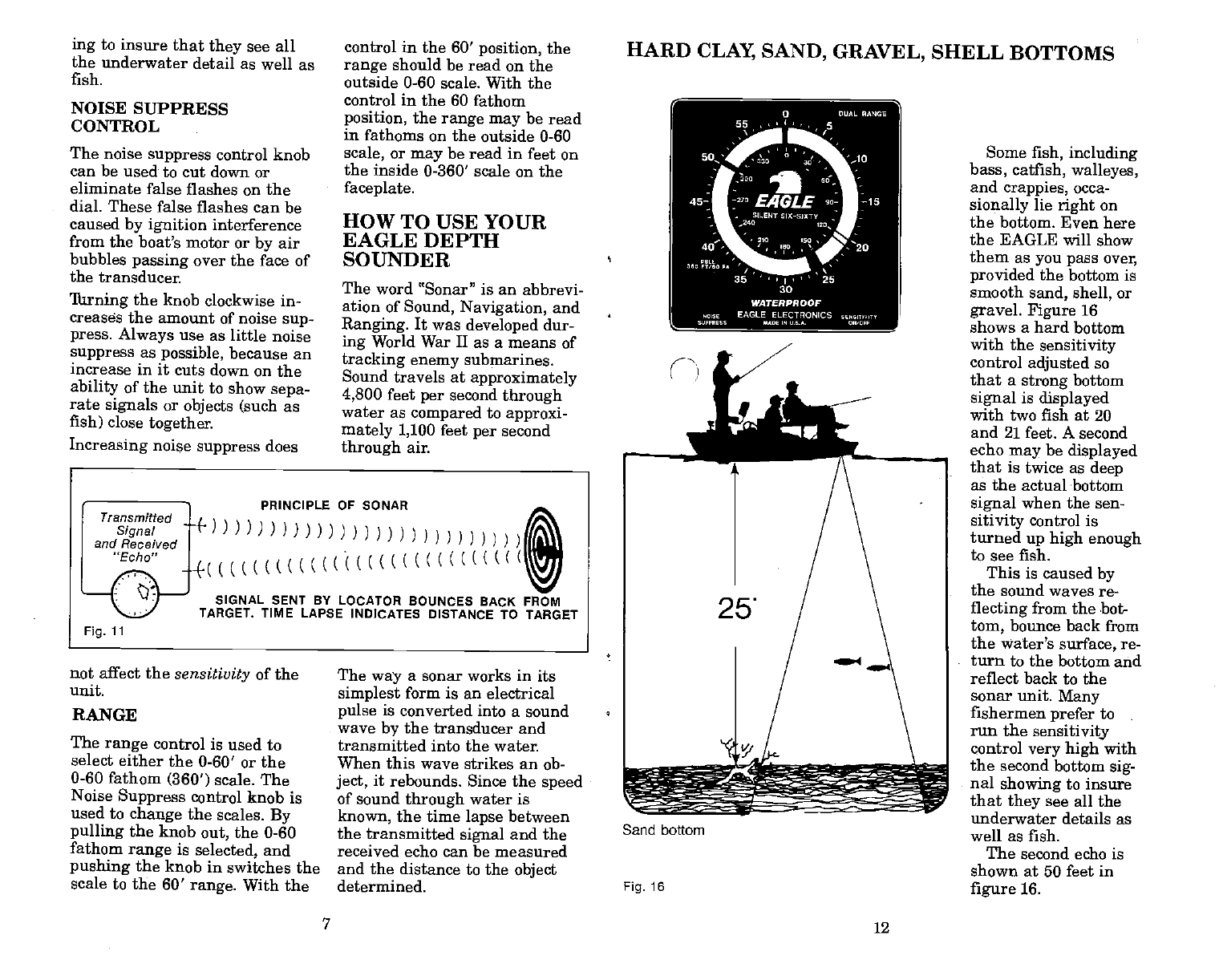
ing
to insure
that
they
see all
the
underwater detail as well
as
fish.
NOISE
SUPPRESS
CONTROL
The noise
suppress
control knob
can be used
to cut down or
eliminate false
flashes on the
dial. These false
flashes can be
caused
by ignition
interference
from the boat's motor
or
by
air
bubbles
passing
over the face of
the transducet
Ilirning
the knob
clockwise in-
creass the
amount of noise
sup-
press.
Always
use as
little noise
suppress
as
possible,
because an
increase in it cuts down
on the
ability
of the unit to show
sepa-
rate
signals
or
objects
(such as
fish) close
together.
Increasing
noise
suppress
does
not affect the
sensitivity
of the
unit.
RANGE
The
range
control is used
to
select either
the 0-60' or the
0-60
fathom
(360')
scale.
The
Noise
Suppress
control knob
is
used to
change
the scales.
By
pulling
the
knob
out,
the 0-60
fathom
range
is
selected,
and
pushing
the
knob in switches the
scale to the 60'
range.
With the
control in the 60'
position,
the
range
should be read on the
outside 0-60 scale. With
the
control in the 60 fathom
position,
the
range may
be read
in fathoms on the outside
0-60
scale,
or
may
be read in feet
on
the
inside 0-360' scale on
the
faceplate.
HOW
TO USE YOUR
EAGLE DEPTH
SOUNIJER
The
word 'Sonar" is an abbrevi-
ation of
Sound,
Navigation,
and
Ranging.
It
was
developed
dur-
ing
World War II
as a means of
tracking
enemy
submarines.
Sound travels at
approximately
4,800
feet
per
second
through
water
as
compared
to
approxi-
mately 1,100
feet
per
second
through
air.
The
way
a sonar works in its
simplest
form is an
electrical
pulse
is converted into a sound
wave
by
the transducer and
transmitted into the water.
When this wave
strikes
an
ob-
ject,
it rebounds. Since the
speed
of sound
through
water is
known,
the time
lapse
between
the transmitted
signal
and the
received echo can be measured
and the distance to the
object
determined.
Some
fish,
including
bass, catfish, walleyes,
and
crappies,
occa-
sionally
lie
right
on
the bottom. Even here
the EAGLE will show
them
as
you pass over,
provided
the bottom is
smooth
sand,
shell,
or
gravel.
Figure
16
shows a
hard bottom
with the
sensitivity
control
adjusted
so
that a
strong
bottom
signal
is
displayed
with two fish at 20
and 21 feet. A second
echo
may
be
displayed
that
is twice as
deep
as
the actual bottom
signal
when the sen-
sitivity
control is
turned
up high enough
to see
fish.
This is
caused
by
the sound
waves re-
flecting
from the bot-
tom,
bounce
back from
the water's
surface,
re-
turn to the
bottom and
reflect back to the
sonar unit.
Many
fishermen
prefer
to
run
the
sensitivity
control
very high
with
the
second bottom
sig-
nal
showing
to insure
that
they
see all the
underwater
details as
well as fish.
The second
echo is
shown at 50 feet in
figure
16.
7
12
HARD
CLAY, SAND,
GRAVEL,
SHELL
BOTTOMS
PRINCIPLE OF SONAR
flfl)))flfl)flflfl)))fl
.( ((((
((((
(
(((
( ((
( ( ((((((K
SIGNAL SENT BY LOCATOR BOUNCES
BACK FROM
TARGET. TIME LAPSE INDICATES
DISTANCE TO TARGET
Fig.
11
Sand
bottom
Fig.
16
PDF compression, OCR, web-optimization with CVISION's PdfCompressor



